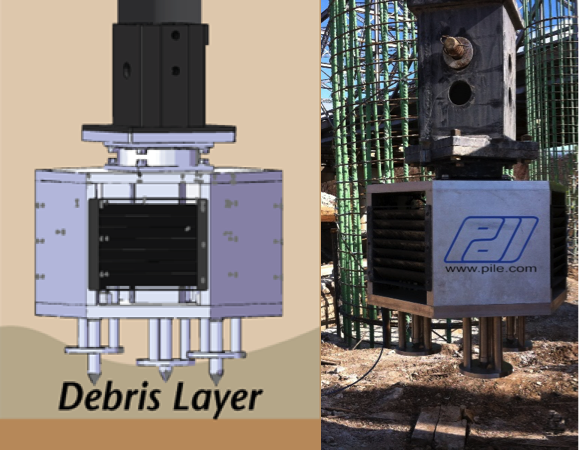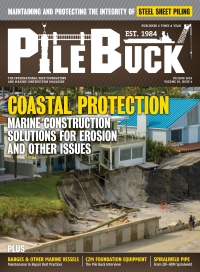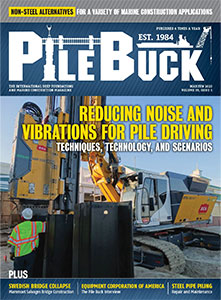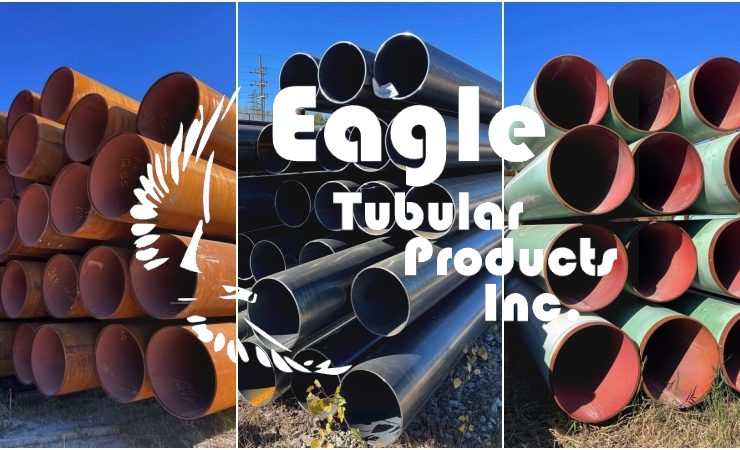SQUID Evaluates Bottom of Drilled Shafts

By Brent Robinson, PhD, P.E, Vice President, Pile Dynamics, Inc.
PDI’s new Shaft Quantitative Inspection Device (SQUID) provides measured load-penetration curves at the base of drilled shafts and bored piles. It provides construction professionals quick and reliable information about the cleanliness of the hole and the strength of the interface between a bearing layer and the base of a drilled shaft. SQUID is lowered into the borehole by attaching it to the drill stem or Kelly Bar after bottom clean-out by the contractor. SQUID testing can be completed within a few minutes, minimally interrupting construction.

SQUID, shown in Figure 1, is configured with three standard-size cone penetrometers (10 cm2) to calculate the force required to penetrate the bearing layer, and three displacement sensors to measure the distance the cone penetrates, starting from the top of a debris layer. The displacement near each penetrometer is measured by a high accuracy displacement transducer attached to a plate that bears on the debris layer.
The SQUID Analyzer provides the output and remains in the hands of the inspector a safe distance from the shaft excavation. Load and penetration measurements can be displayed in real time with a wired connection from the SQUID to a wireless transmitter at the top of the hole. The wire can also be replaced with an on-board wireless transmitter that collects data from several tests at the shaft bottom, and transmits that data upon return to the surface back to the SQUID Analyzer.

To determine debris thickness, the engineer defines a threshold force or tip resistance. The debris layer is defined when the measured load-penetration curves exceeds the threshold force.
On a recent site, drilled shafts of approximately 1 m in diameter were drilled to rock, and the bottoms tested with a SQUID for debris thickness. Site specifications required debris layer thickness measurements of less than 12.5 mm (1/2 inch) over 50% of the shaft bottom. Figure 2 from the SQUID software report illustrates significant increases in Penetrometer Force (x-axis) with minimal penetration (y-axis). The identified force threshold was crossed at 5, 6 and 32 mm, respectively. Because more than two measurements of the three measurements were less than 12.5 mm, it is theorized that the third penetrometer penetrated into a groove caused by the drilling teeth, the onsite inspectors accepted the shaft. SQUID measurements proceeded to the next foundation element.

For shafts requiring end bearing, the measurements may also be used to confirm that cone tip resistance measurements on production shafts are similar to or exceed cone tip resistance measurements on shafts that are subjected to static or dynamic load testing. This verification, in conjunction with site soil exploration and observations during drilling, will provide designers with further confidence in their designs or a justification to shorten shafts. SQUID is the only device that measures parameters that could be used for the assessment of the material at the bottom of the shaft without the need of mobilizing geotechnical drilling rigs to the site.
In summary, force and displacements measured with SQUID can be used to determine cone resistance and compare it with other parameters to quantitively and qualitatively assess the soil conditions at the bottom of the shaft. A SQUID installation and demonstration video, along with further details are available on PDI’s YouTube page here.
SQUID is the latest addition to Pile Dynamics extensive line of quality assurance and quality control systems for the deep foundations industry.

















